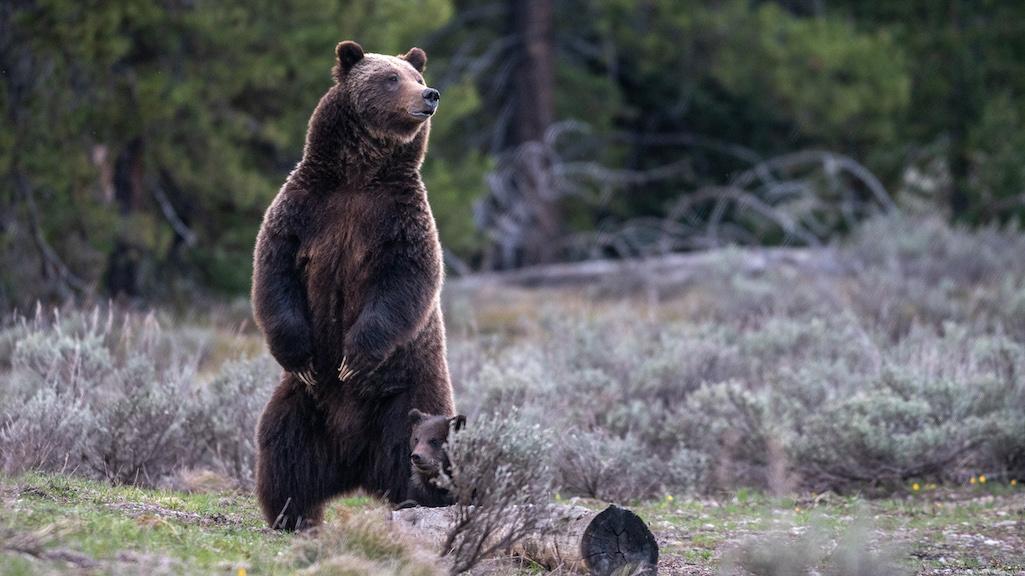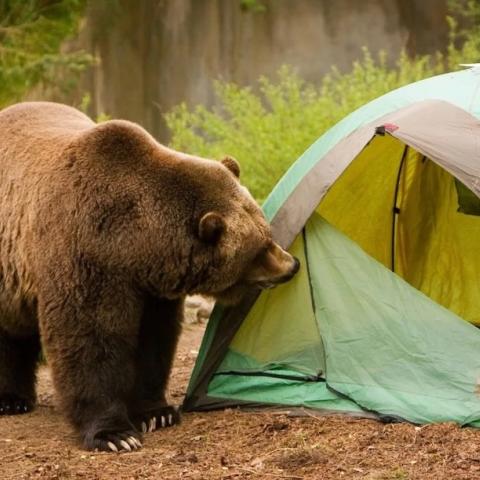
Two young Grand Teton National Park grizzly bears have been killed, apparently by an adult bear/NPS file
Two young grizzly bears have been found dead in Grand Teton National Park, the apparent victims of another grizzly.
Park staff say the two yearling bears were found Tuesday morning about 250 yards apart south of the Colter Bay area of the park. Both showed signs of depredation by a larger bear, a park release said.
Following the discovery, law enforcement and wildlife staff conducted extensive patrols of the Colter Bay developed area, Highway 89, Leeks Marina, AMK Ranch, and surrounding locations to monitor for bear activity. During these operations, park staff observed a lone adult grizzly bear with red ear tags in the vicinity. She was identified as GB1063, a bear who had frequently been observed in recent weeks with her three yearling cubs. No cubs were observed with her during this sighting.
“Bears exhibit a range of fascinating behaviors influenced by their biological needs, social structures, and environmental factors,” said Grand Teton bear biologist Justin Schwabedissen. “While it is incredibly sad to see a grizzly bear lose its cubs, depredation by other bears is a natural source of cub mortality in the Greater Yellowstone Ecosystem and has previously occurred in Grand Teton.”
In recent weeks, GB1063 and her cubs had been observed in and around developed and residential areas at Colter Bay. In accordance with park policy, staff hazed the bears when they lingered in these areas or remained immediately adjacent to nearby roadways. Hazing is an essential management tool used to reduce potential conflicts between humans and wildlife, for their safety and ours.
When it is necessary to haze a bear, staff use a spectrum of tools tailored to the situation while providing for human and animal safety. Each time hazing was deemed appropriate and implemented, GB1063 and her cubs remained together.
Based on observed behavior and evidence, it is likely that a male grizzly bear in the area led to the separation of the yearlings from GB1063 and was responsible for the depredation. The status of the third yearling remains unknown.




 Support Essential Coverage of Essential Places
Support Essential Coverage of Essential Places






